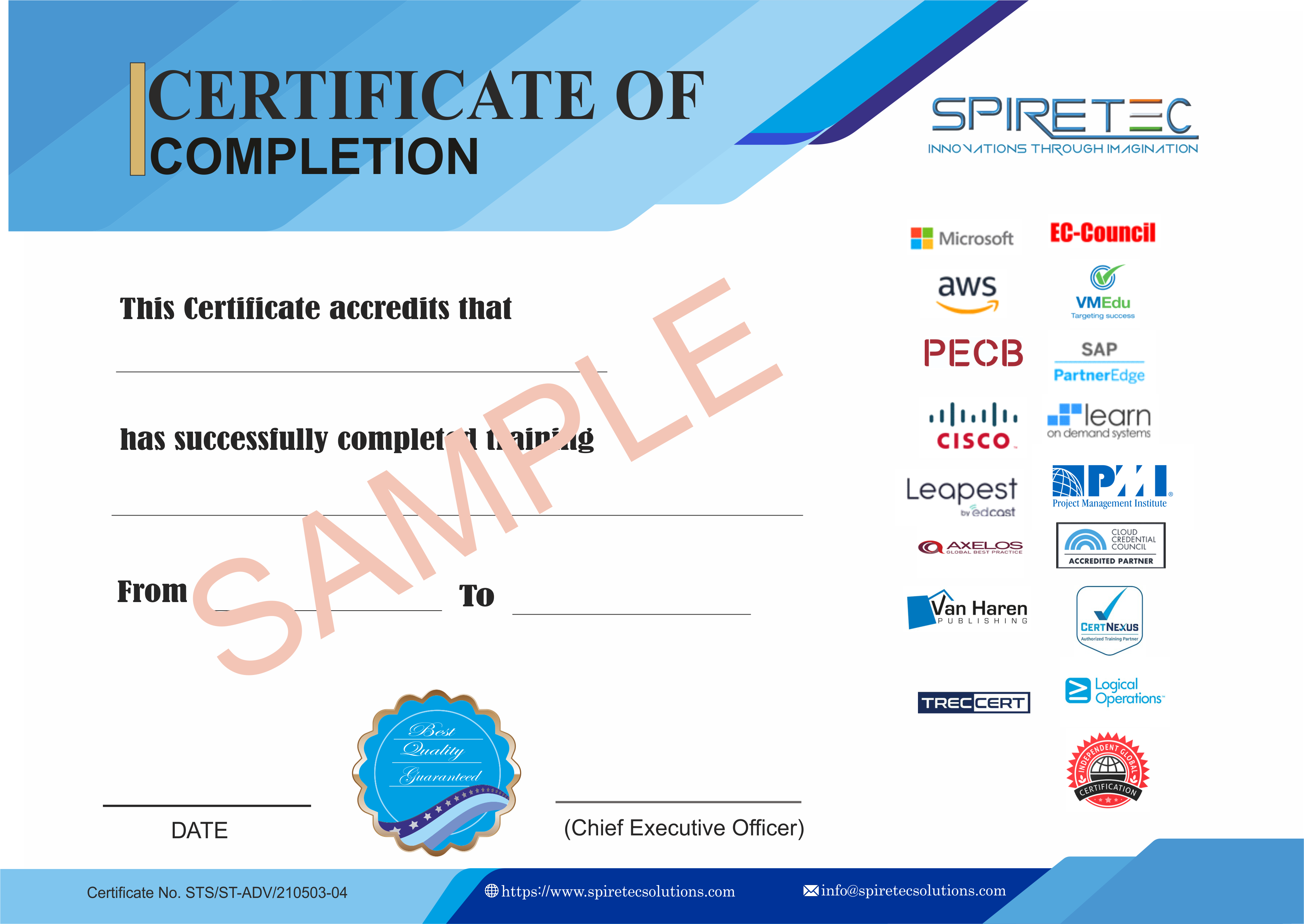The Certified Data Privacy Solutions Engineer (CDPSE) course is a comprehensive program designed to provide learners with the skills necessary to implement effective privacy solutions and manage data protection within their organizations. The course is structured into three key modules:
-
Module 1: Privacy Governance
-
This module covers the fundamentals of personal data management, focusing on various privacy laws, documentation, consent processes, and data governance responsibilities. It emphasizes the importance of privacy training, vendor management, risk assessment, and incident management.
-
Module 2: Privacy Architecture
-
Learners are introduced to the technical aspects of data protection, including secure technology stacks, cloud services, system hardening, and privacy-focused development practices. Topics such as encryption, identity management, and monitoring's critical role in maintaining privacy are thoroughly explored.
-
Module 3: Data Cycle
By mastering these areas, participants will be well-equipped to support and enhance their organization's data privacy frameworks, ensuring alignment with global standards and regulations.
Course Prerequisites
To ensure a successful learning experience in the CDPSE course, the following prerequisites are recommended:
-
Basic IT Concepts:
-
Familiarity with Data Protection and Privacy Principles:
-
Knowledge of Privacy Laws and Regulations:
-
Exposure to Information Security Principles:
-
Understanding of Data Subject Rights:
-
Technical Understanding:
-
Critical Thinking and Analytical Skills:
While prior knowledge in these areas is beneficial, the CDPSE course is designed to build upon foundational concepts and guide learners through more advanced topics in data privacy solutions engineering.
Target Audience for CDPSE
The CDPSE course is aimed at professionals seeking to develop essential skills in privacy governance, architecture, and data lifecycle management. The target audience includes:
-
Data Privacy Officers
-
Compliance Officers and Lawyers specializing in data privacy
-
Information Security Analysts
-
IT Managers and Consultants
-
Risk Assessment Professionals
-
Data Protection Managers
-
Cybersecurity Professionals
-
Systems and Network Administrators
-
Software Developers with a focus on privacy
-
Cloud Security Specialists
-
Data Governance and Quality Managers
-
Privacy and Security Architects
-
IT Auditors involved in privacy audits
-
Corporate Training Professionals specializing in privacy and compliance
-
Government Officials dealing with data protection regulations
-
HR Professionals overseeing employee data privacy
-
Marketing Managers who handle customer data
-
Product Managers incorporating privacy into product design
-
Business Analysts involved in data-sensitive projects
Learning Objectives - What You Will Learn in this CDPSE Course
The CDPSE course aims to equip learners with robust skills in privacy governance, architecture, and data lifecycle management to ensure compliance and effective data protection. The key learning objectives include:
Course Outline:
Domain 1: Privacy Governance (34%)
A. Governance
-
Personal Data and Information
-
Privacy Laws and Standards across Jurisdictions
-
Privacy Documentation (e.g., Policies, Guidelines)
-
Legal Purpose, Consent, and Legitimate Interest
-
Data Subject Rights
B. Management
-
Roles and Responsibilities related to Data
-
Privacy Training and Awareness
-
Vendor and Third-Party Management
-
Audit Process
-
Privacy Incident Management
C. Risk Management
-
Risk Management Process
-
Privacy Impact Assessment (PIA)
-
Threats, Attacks, and Vulnerabilities related to Privacy
Domain 2: Privacy Architecture (36%)
A. Infrastructure
-
Technology Stacks
-
Cloud-based Services
-
Endpoints
-
Remote Access
-
System Hardening
B. Applications and Software
-
Secure Development Lifecycle (e.g., Privacy by Design)
-
Applications and Software Hardening
-
APIs and Services
-
Tracking Technologies
C. Technical Privacy Controls
-
Communication and Transport Protocols
-
Encryption, Hashing, and De-identification
-
Key Management
-
Monitoring and Logging
-
Identity and Access Management
Domain 3: Data Cycle (30%)
A. Data Purpose
-
Data Inventory and Classification (e.g., Tagging, Tracking, SOR)
-
Data Quality and Accuracy
-
Dataflow and Usage Diagrams
-
Data Use Limitation
-
Data Analytics (e.g., Aggregation, AI, Machine Learning, Big Data)
B. Data Persistence
-
Data Minimization (e.g., De-identification, Anonymization)
-
Data Migration
-
Data Storage
-
Data Warehousing (e.g., Data Lake)
-
Data Retention and Archiving
-
Data Destruction







 Live Online Training (Duration : 32 Hours)
Live Online Training (Duration : 32 Hours)
